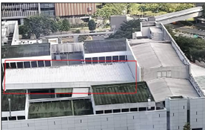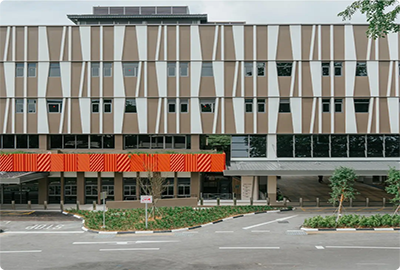The built environment has a significant impact on sustainability, from construction and operations to eventual demolition. As NUHS continues to build new healthcare facilities, like the upcoming Tengah General and Community Hospital and polyclinics, as well as redevelop existing ones including the National University Hospital and Alexandra Hospital, we take environmental factors into consideration from the earliest planning and design stages, to developing healthcare facilities that minimise resource use, waste, and emissions over their entire lifecycle.
Mitigating the urban heat island impact
The urban heat island effect causes higher temperatures in urban areas compared to less developed locations. To improve outdoor thermal comfort for patients and staff, NUHS is studying campus hotspots and incorporating heat mitigation strategies, such as cool paint and greenery, into existing and new developments. These climate resiliency measures aim to reduce ambient temperatures, buffer global warming impacts, and create a more comfortable outdoor environment across NUHS campuses.

Cool paint on a roof in NUH

An iterative design approach was taken for the new Alexandra Hospital Cocoon Building, to avoid over-engineering and to use less concrete, glass, and steel.

Green mat above a walkway in NUH campus
Back to 'NUHS Sustainability' >




















